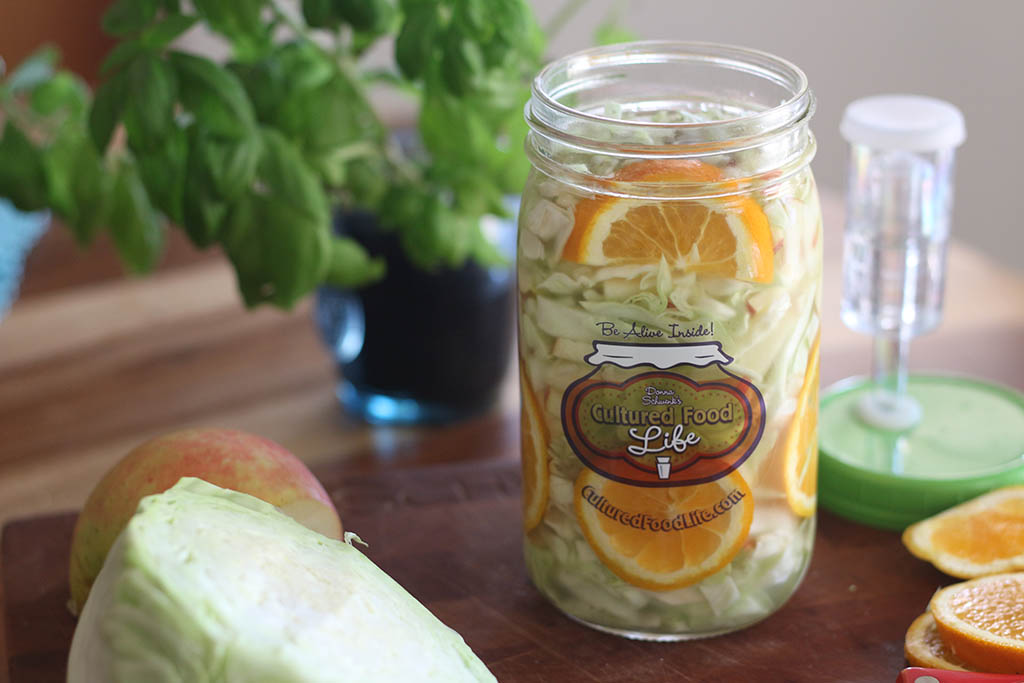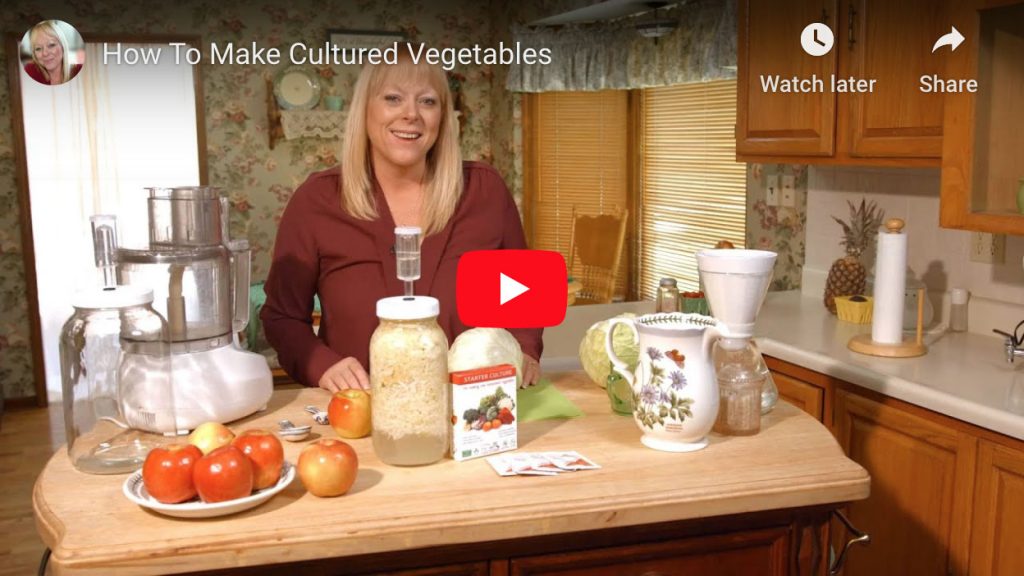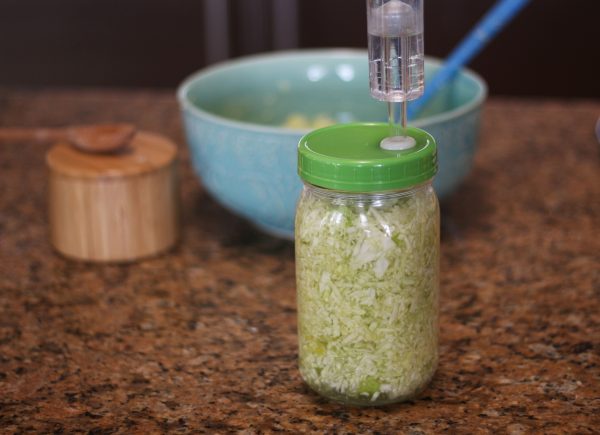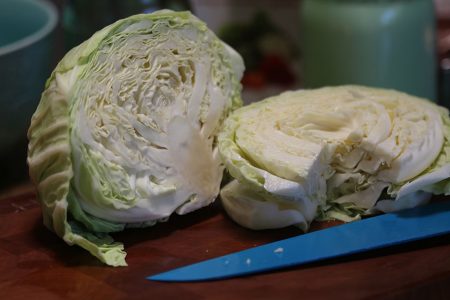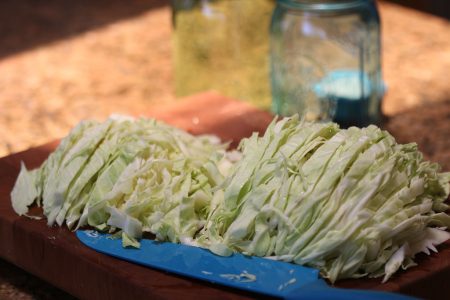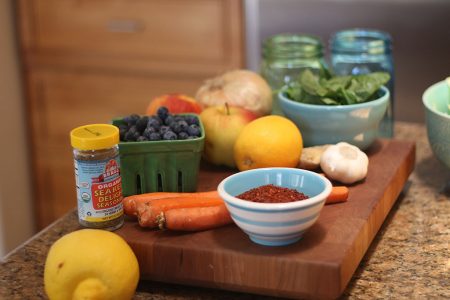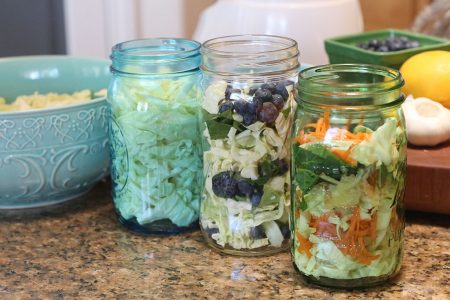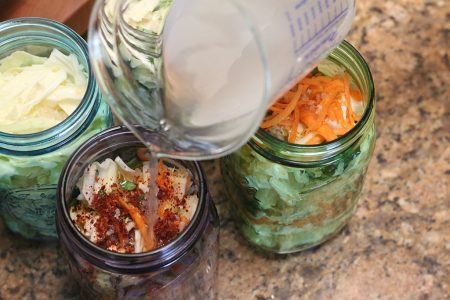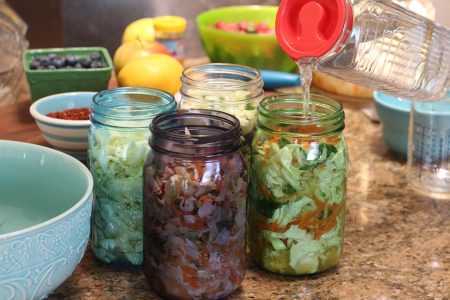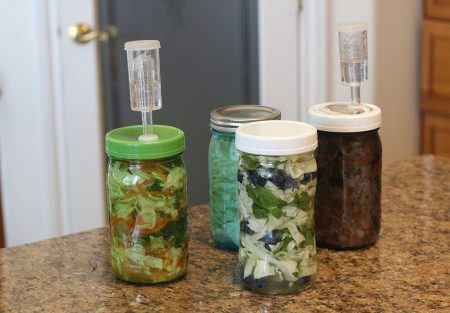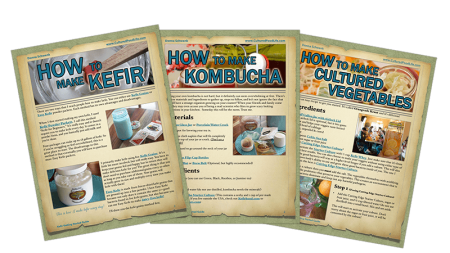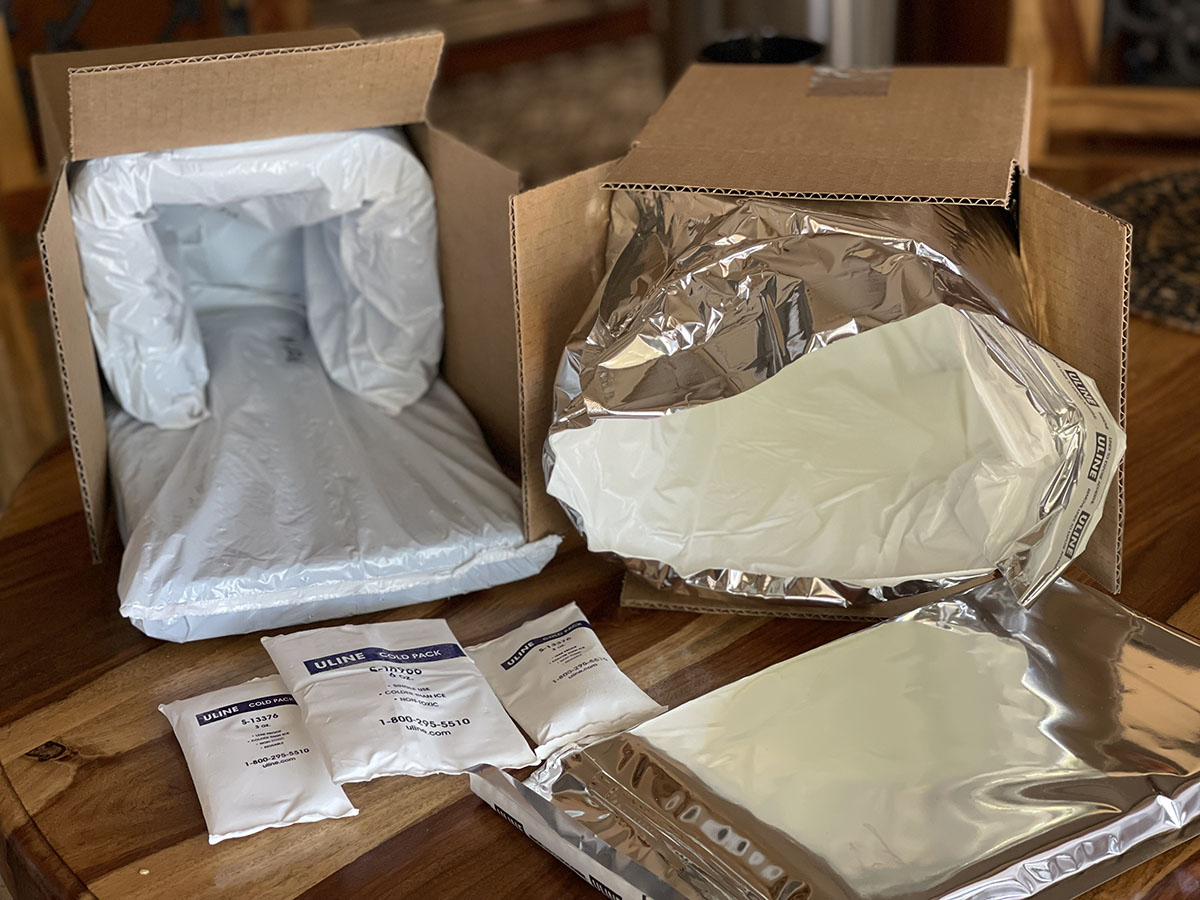
How to Make Cultured Vegetables
Having a jar of cultured vegetables in your fridge is a must. They can last for over nine months in the fridge and can be very helpful if you have stomach distress of any kind be it food poisoning or stomach cramps. Just a spoonful of the juice works mightily and will calm your stomach down within a few minutes. You need a jar in your fridge to see how effective this can be. Powerful food that works like medicine when you need it the most. Let me show you how to make a jar. It's easy and fun!
The superstar bacteria in cultured vegetables is called Lactobacillus plantarum (L. plantarum). It is extremely hardy, survives stomach acid with ease, and can make the full trip from your mouth – to your intestines – to your colon – to colonize you in a powerful way. L. plantarum is a welcome guest that works mightily for you by fiercely attacking pathogenic (bad) bacteria in your body. It will strengthen your good bacteria by killing the bad guys, and then it helps your own good bacteria grow stronger, and helps you to be more resistant to future invasions of pathogens. It's important to note that this is a transient bacteria which means it will only last a few days in the body so it's important to consume it often.
Let's Get Started
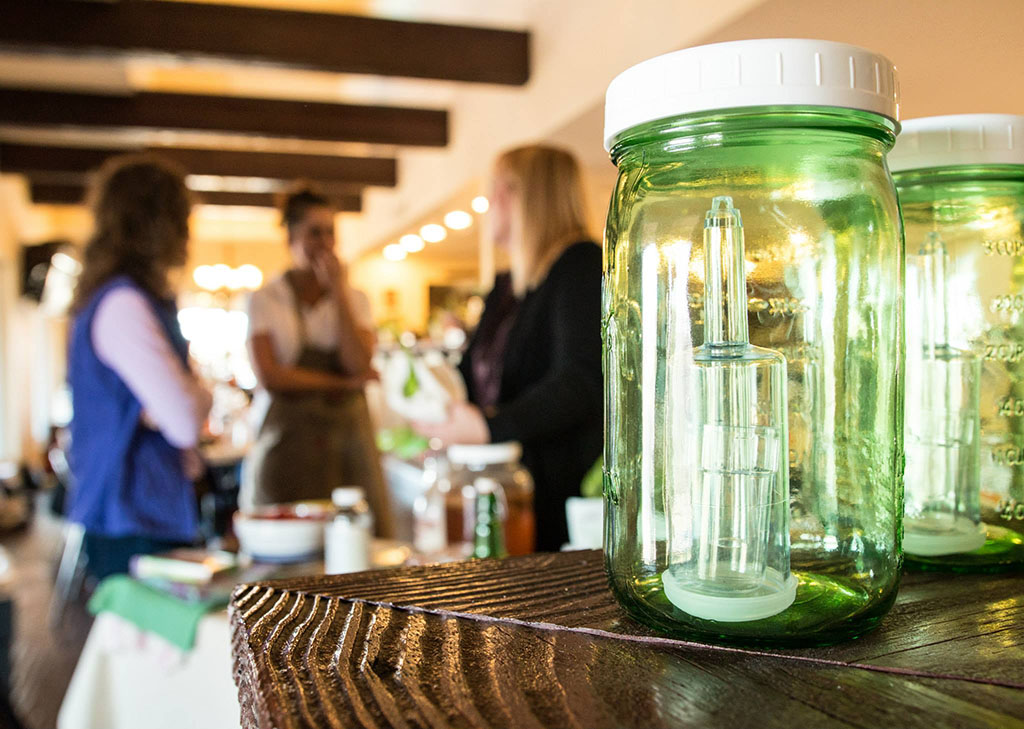
You first must choose the vessel you will use to ferment the vegetables. You can use a canning jar with a lid, a crock with a lid, a clamp-down jar that has a gasket, or my favorite is a jar with an airlock lid. Airlock jars create a low-oxygen, or anaerobic, environment in which lactic-acid bacteria may thrive. It creates the best results with less chance of mold, but airlock jars are not absolutely necessary.
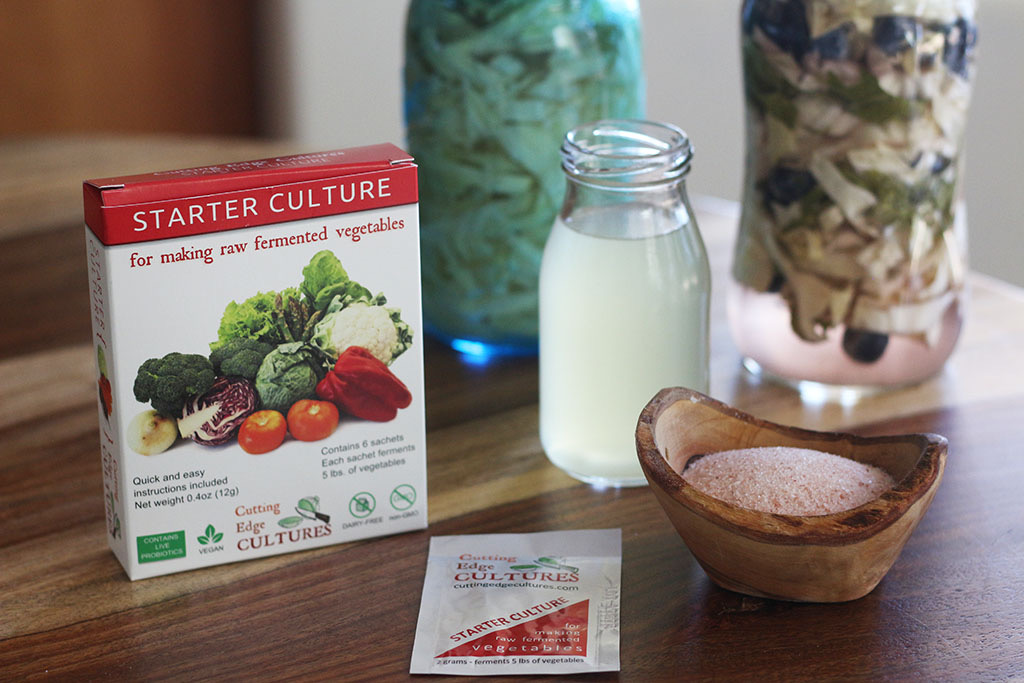
Decide Which Method to Use
You will then choose whether to use a starter culture or whether to ferment without one. You can certainly make them without a culture, but the good bacteria will stay at a higher level longer if you add a culture. This will also increase your own body’s ability to use and grow these good bacteria inside of you. The one that I believe does this the best is Cutting Edge Cultures.
The three fermenting methods are listed below.
1: Using A Starter Culture
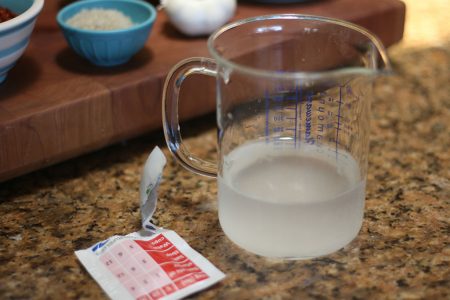
2: Without A Starter Culture
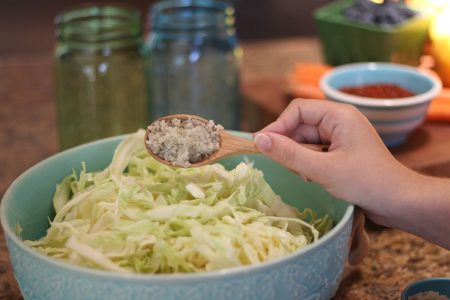
3: Using Kefir Whey
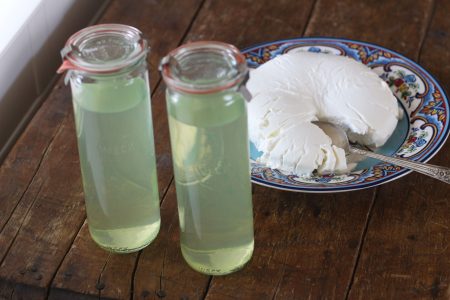

Gather Your Ingredients
Buy the freshest veggies you can find. This makes summertime ideal, although I’ve cultured a lot of vegetables in the winter too. You’ll get less kahm yeast which is a harmless white yeast that can occur if your veggies aren’t fresh. You’ll want to remove it if you see it because it can make your veggies taste bad. You can culture almost any vegetable. As a general rule of thumb, cabbage takes six days, while most other veggies like carrots, tomatoes, asparagus, etc., can take two to three days. Check out my recipes to see more detailed instructions.
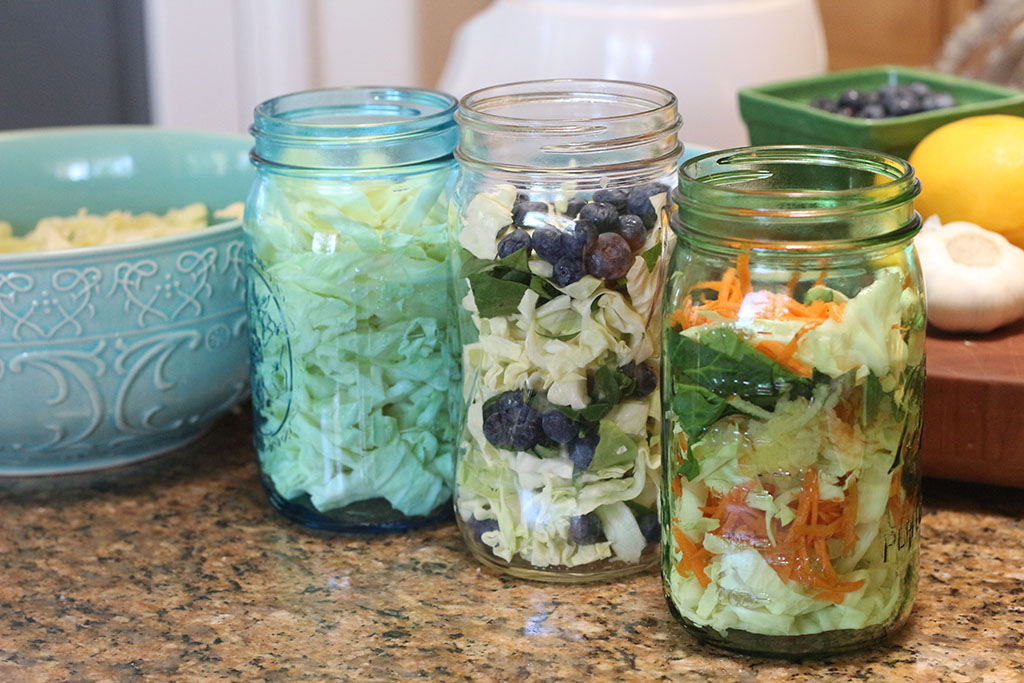
Choose Your Recipe
Let’s get started! We have over 100 cultured veggie recipes to choose from. Be creative! Mix and Match!! Turn your kitchen into a culturing haven!!! We have a basic recipe listed below, as well as this video:
Here is a basic kraut recipe to get you started:
Basic Kraut
Watch The Video
Equipment
Ingredients
- 1 package Veggie Starter Culture - or you can use ½ cup kefir whey
- filtered or spring water with minerals
- 1 large head cabbage
- 1 tablespoon Celtic Sea Salt
Every ingredient with a link was selected by me to make it easier for you. I may receive a small affiliate commission if you buy something through my links. Thank you! ❤️
Instructions
Notes
Listen To My Podcast
Are you on the list?
Sign up today and I'll send you my free Getting Started Guide!
Each week I'll send you updates, tips, recipes, and more! You might even be a winner of my weekly giveaway! (starter cultures, memberships, and more!)
Come be a part of my cultured food family!

